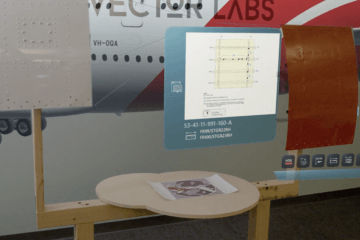Cell on Wings
My colleague, Peter Jones, heads up Telstra's RPAS program (Remotely Piloted Aircraft System). He showcased Telstra's Cell on Wings at the MilCIS conference recently, demonstrating an innovative new approach to disaster recovery and telecommunications.

Telstra's Pulse Aerospace Vapor 55 Helicopter
The Cell on Wings is an experimental prototype, in its second generation, focussed on the rapid recovery of Telstra's network in the case of natural disasters, which may damage cell towers. The COW is able to hover in place of the tower, and provide coverage.
The white box mounted on the side of the helicopter is an Ericsson small cell, able of providing mobile coverage to 250 people. The Vapour is able of carrying multipile cells, with a payload of 5-10kgs.
The Vapor has a flight time of 60 minutes, and a hovering time of 45 minutes. Interestingly, due to aerodynamic effects, hover conserves more energy than flying in set direction! The helicopter is able to be powered using a tether from the ground, akin to a giant extension cable. This allows the craft to hover almost indefinitely, aside from routine maintenance.
Single rotor craft are able to carry up to 2-3 times the weight of equivalent multi-rotor craft, making this a great platform for testing an aerial network.
A final solution may use balloons, or similar systems. Balloons allow for cheaper continuous flight, however in the future the helicopter may be able to autonomously fly to the target destination.
The solution works by both rebroadcasting nearby towers, or by connecting to the network through fibre fed from the ground. Currently the RPAS program is evaluating various solutions and technologies, to understand which provide the best range and capability. A fantastic piece of work from Peter Jones and the wider team in Networks and the CTO Technology team!



1 Comment
MilCIS 2018 – Luca Stamatescu · November 18, 2018 at 9:09 pm
[…] Cell on Wings […]
Comments are closed.